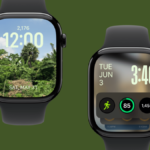The Arrival of Photoshop on Smartphones: A Game Changer in Mobile Editing
The name “Photoshop” has become synonymous with image manipulation. For over three decades, it has dominated the editing landscape. While the program has always been available on desktop and, more recently, tablets, smartphone users previously had to rely on alternative applications for their editing needs.
That scenario shifted significantly earlier this year. In February, Adobe launched Photoshop for the iPhone. Less than four months later, the app entered beta testing for Android users, making it accessible on both major mobile platforms. Simply navigate to the App Store or Google Play, search for “Photoshop,” and you’ll discover the genuine article amid various alternatives like Lightroom, Canva, and Facetune. Notably, the application itself is free, as are many of its essential editing functionalities.
According to Adobe, users will have access to the following complimentary features:
-
Selection tools along with layers and masks
-
Tap Select feature
-
Spot Healing Brush tool
-
AI functionalities from Adobe Firefly, such as Generative Fill and Generative Expand
-
Seamless integration with Adobe Express, Adobe Fresco, and Adobe Lightroom
-
Access to an extensive library of free assets from Adobe Stock

During its initial launch announcement, Adobe showcased various editing techniques possible with the app. These included utilizing a masking tool to transfer a subject from one image to another, employing a quick selection brush to isolate specific areas, stacking multiple images for a visually striking composition, altering the color of particular elements while keeping the rest intact, and swiftly removing unwanted objects from images.
Adobe has also highlighted its advanced AI capabilities, particularly Generative Fill. In a demonstration, a representative used the lasso tool to mark where they wanted to insert an island within an ocean image, subsequently using Generative Fill to generate a lush landscape. In another demo, the tool was employed to eliminate a background and replace it with a sky from a different image section.
For those familiar with Photoshop, the core functions will feel familiar, yet the mobile version distinguishes itself with an interface optimized for handheld devices. Users may need some time to navigate this new layout, which may differ from the traditional desktop experience. Despite this adjustment, the essence of Photoshop remains intact in this mobile adaptation.
Temporary Free Features for Android Users
While the primary features of Photoshop are freely accessible on iPhone, there exists a more robust set of functionalities available through a subscription model. Adobe offers a “Photoshop Mobile and Web plan” for users seeking additional perks across iOS, Android, iPadOS, and web versions. This plan includes:
-
Web-based access to Photoshop
-
Extended Firefly-powered AI tools like Generate Similar and Reference Image
-
Access to over 20,000 fonts (with the option to import your own)
-
Object Select for enhanced precision
-
Magic Wand for targeted modifications
-
Remove Tool for straightforward deletions
-
Clone Stamp for replicating elements
-
Content-Aware Fill for intelligent adjustments
-
Advanced blending modes for refined image styling
-
Lighten and Darken options for selective brightness adjustments
This subscription plan costs $7.99 per month, or alternatively, $69.99 annually. Existing Photoshop subscribers will find these added features included in their plans.
Limited-Time Free Access for Android Users
Good news for Android enthusiasts: Adobe is offering all these premium features at no cost during the beta phase. For anyone intrigued by Photoshop, seizing the chance to explore the beta version is highly advisable to take advantage of these enhanced capabilities.












